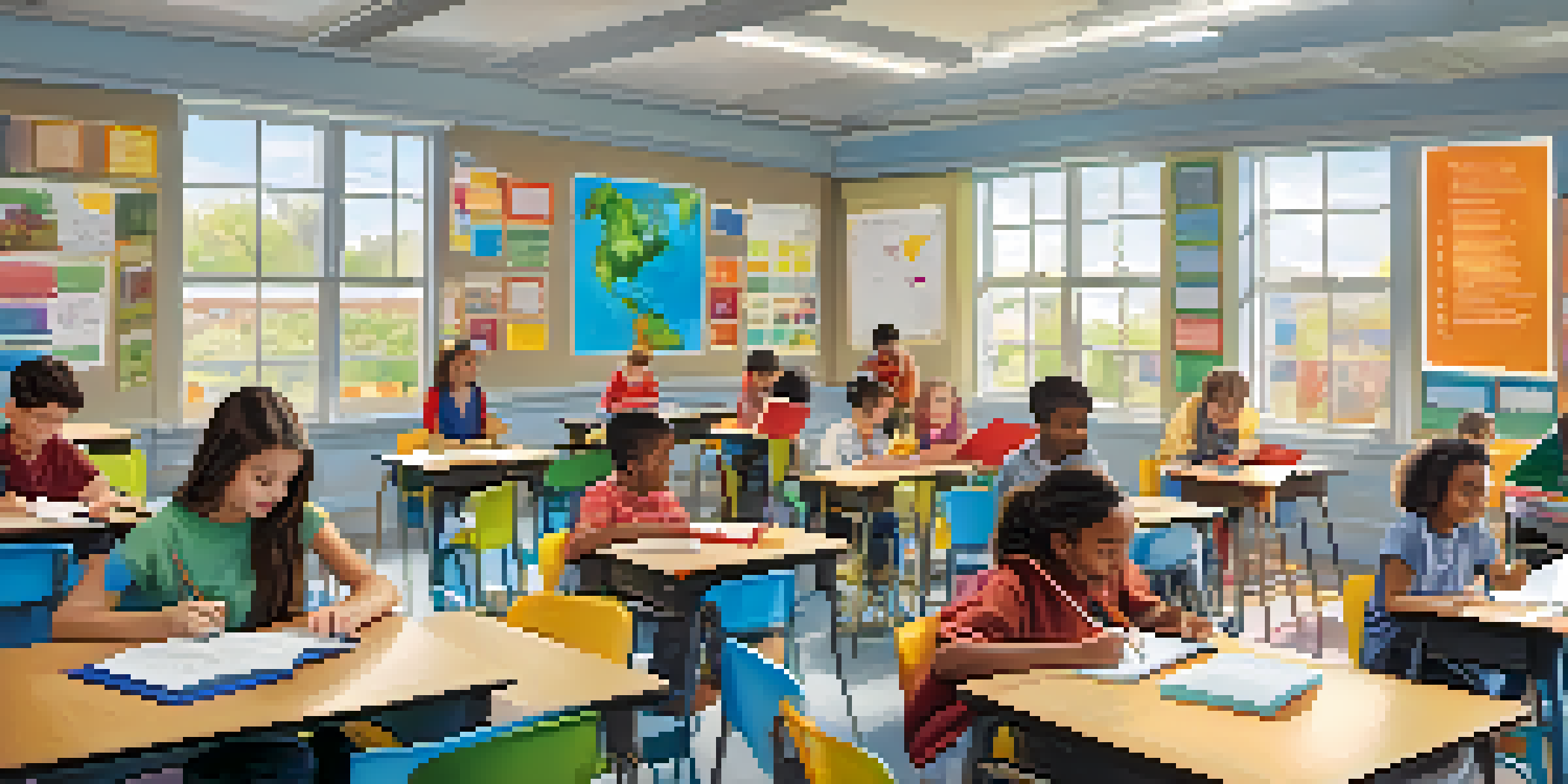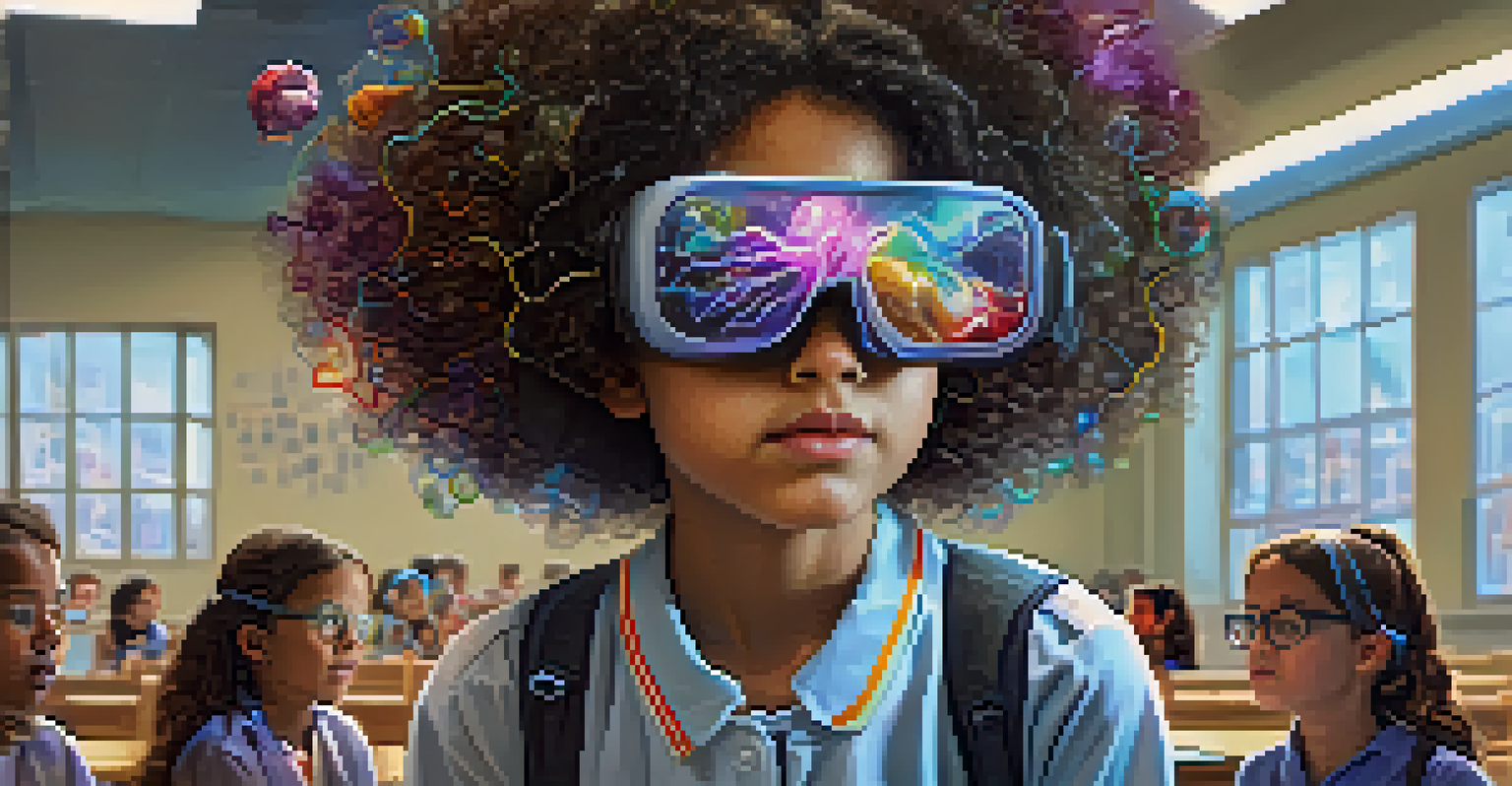The Future of Education Technology: Trends and Innovations

The Rise of Artificial Intelligence in Education
Artificial intelligence (AI) is revolutionizing how we approach education. AI tools can personalize learning experiences by adapting to individual student needs, thus enhancing engagement and retention. For instance, platforms like DreamBox Learning use AI to tailor math lessons based on a student's unique learning pace and style.
Education is the most powerful weapon which you can use to change the world.
Moreover, AI-driven chatbots are becoming valuable teaching assistants, providing instant feedback and answering student queries outside of classroom hours. This not only helps students stay engaged but also allows educators to focus on more complex teaching tasks. Imagine having a virtual tutor available 24/7 to help with homework!
As we look to the future, AI's ability to analyze vast amounts of data will continue to refine educational tools and strategies. This creates an exciting landscape where learning can be more efficient, effective, and accessible than ever before.
Gamification: Making Learning Fun and Engaging
Gamification is transforming traditional education methods by integrating game-like elements into learning environments. This approach encourages student participation and motivation, making even the most challenging subjects enjoyable. Think of how many students are drawn to games like Kahoot! that turn quizzes into competitive fun.

By incorporating badges, leaderboards, and rewards, educators can create a sense of achievement and community among learners. This not only fosters a positive learning atmosphere but also encourages collaboration and healthy competition. Picture a classroom where students are excited to challenge each other in math games!
AI Personalizes Learning Experience
Artificial intelligence tailors educational content to individual student needs, enhancing engagement and retention.
As gamification continues to evolve, we can expect more sophisticated platforms that blend learning with entertainment seamlessly. This innovation promises to captivate the younger generation and enhance knowledge retention in a playful, interactive way.
Virtual and Augmented Reality: New Dimensions of Learning
Virtual reality (VR) and augmented reality (AR) are making waves in the educational sector by creating immersive learning experiences. With VR, students can explore historical sites or conduct science experiments in a safe, controlled environment. Imagine walking through ancient Rome or peering into the human body without leaving the classroom!
The future of education is not in the classroom, but in the world around us.
On the other hand, AR enhances the real world by overlaying digital information onto physical surroundings. This can turn a simple biology lesson into an interactive adventure, where students can visualize complex processes like photosynthesis in 3D. It’s a fascinating way to bridge the gap between theoretical knowledge and practical application.
As these technologies become more accessible and affordable, we can anticipate a shift in how education is delivered. The potential for experiential learning is vast, offering students a deeper understanding of the subject matter that textbooks alone cannot provide.
Personalized Learning: Tailoring Education to Individual Needs
Personalized learning is becoming a cornerstone of modern education, focusing on the unique needs and learning styles of each student. By leveraging data analytics, educators can identify strengths and weaknesses, allowing for customized lesson plans. This approach ensures that no student is left behind and everyone can learn at their own pace.
For example, platforms like Khan Academy offer tailored coursework that adjusts based on a student's performance. This means that if a learner excels in certain areas, they can move ahead while spending more time on challenging subjects. It’s like having a personal coach guiding you through your educational journey!
Gamification Boosts Student Motivation
Incorporating game-like elements into learning makes education more enjoyable and encourages active participation.
Looking ahead, personalized learning will likely integrate even more sophisticated technologies, such as AI and machine learning. This evolution will create dynamic learning environments where every student can thrive, making education more effective and inclusive.
Collaborative Learning: Building a Community of Learners
Collaborative learning is gaining traction as a powerful educational approach that emphasizes teamwork and peer interaction. By working together on projects, students learn not just from the content but also from each other’s perspectives and skills. This method mirrors the real-world scenario where collaboration is essential in most careers.
Tools like Google Classroom and Microsoft Teams facilitate this collaborative environment, enabling students to share resources, discuss ideas, and provide feedback in real-time. Such platforms foster communication and a sense of belonging, making learning a collective experience rather than an isolated task. Imagine a classroom buzzing with discussion and creativity as students brainstorm together!
As technology continues to evolve, we can expect even more collaborative tools that break down geographical barriers and connect learners worldwide. This globalization of education will enrich the learning landscape, exposing students to diverse cultures and ideas.
The Role of Data in Shaping Educational Outcomes
Data analytics is playing an increasingly important role in education, allowing institutions to track student performance and improve outcomes. By analyzing data from assessments, attendance, and engagement, educators can identify trends and make informed decisions. This data-driven approach helps tailor educational strategies to meet the specific needs of students.
For example, predictive analytics can forecast which students may need additional support, enabling timely interventions. This proactive approach not only aids in improving individual student performance but also enhances overall classroom dynamics. It’s like having a roadmap that guides educators in navigating the complexities of teaching!
Collaborative Learning Builds Community
Emphasizing teamwork in education allows students to learn from each other, fostering communication and a sense of belonging.
As we advance, the ethical use of data will become paramount in education. Striking a balance between leveraging data for improvement while respecting privacy will be crucial in fostering trust among students and educators alike.
Mobile Learning: Education at Your Fingertips
Mobile learning is reshaping how students access educational content, making learning more flexible and convenient than ever. With smartphones and tablets, students can engage with learning materials anytime, anywhere, whether they’re commuting or at home. This accessibility breaks down the traditional barriers of classroom-based learning.
Applications like Quizlet and Duolingo offer bite-sized lessons and interactive quizzes that fit seamlessly into a busy lifestyle. This means that learning can occur in short bursts, allowing students to integrate education into their daily routines. Imagine mastering a new language during your morning commute!

As technology continues to advance, we can expect even more innovations that enhance mobile learning experiences. This trend promises to make education more inclusive, catering to the varied lifestyles and learning preferences of today’s students.